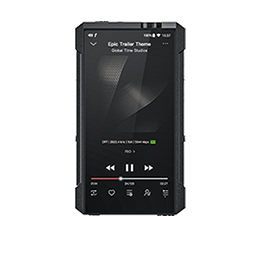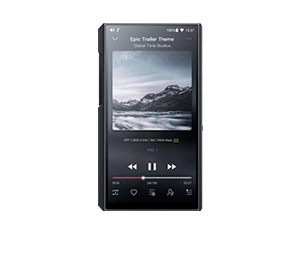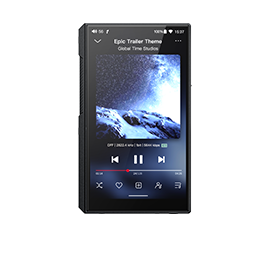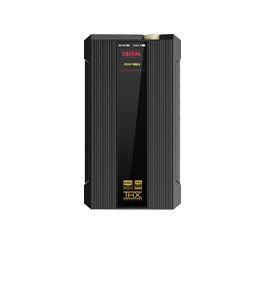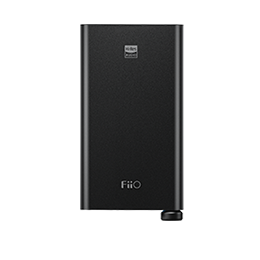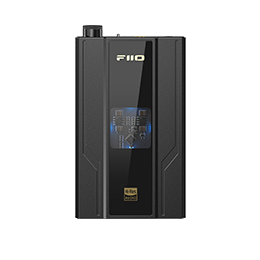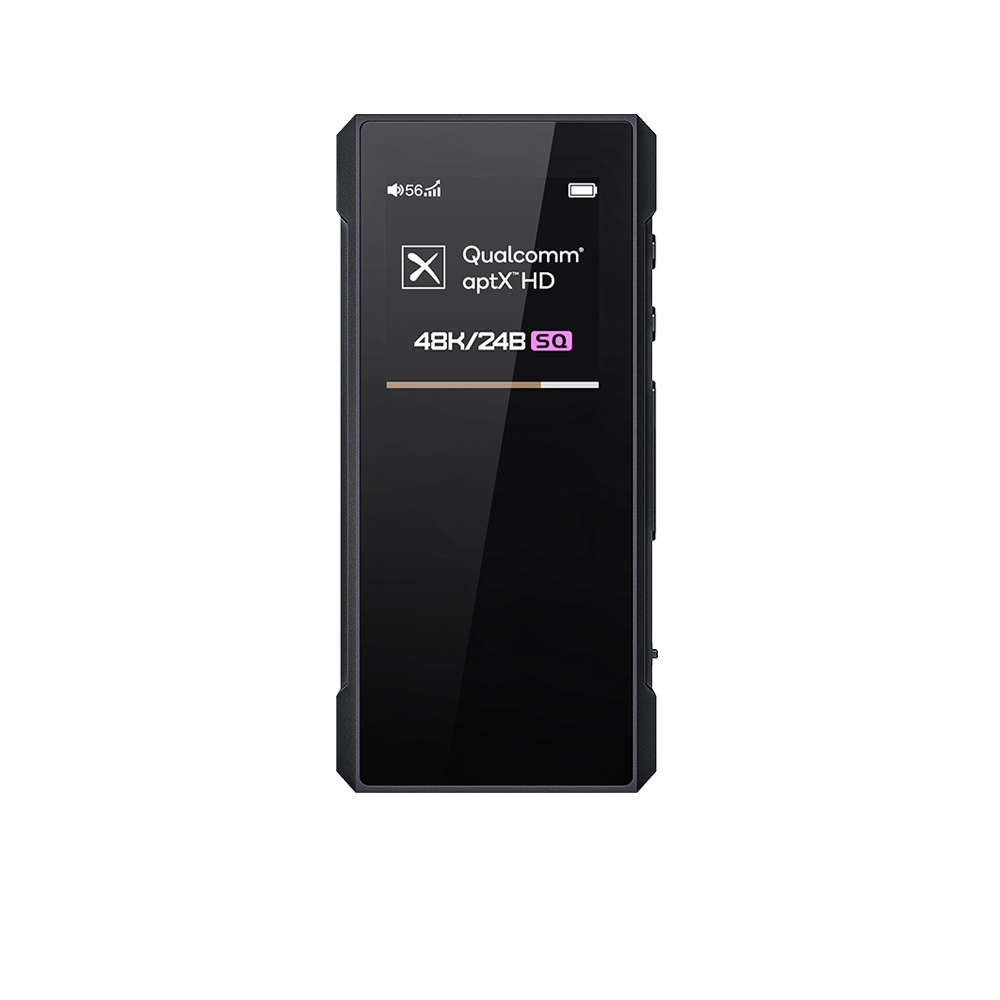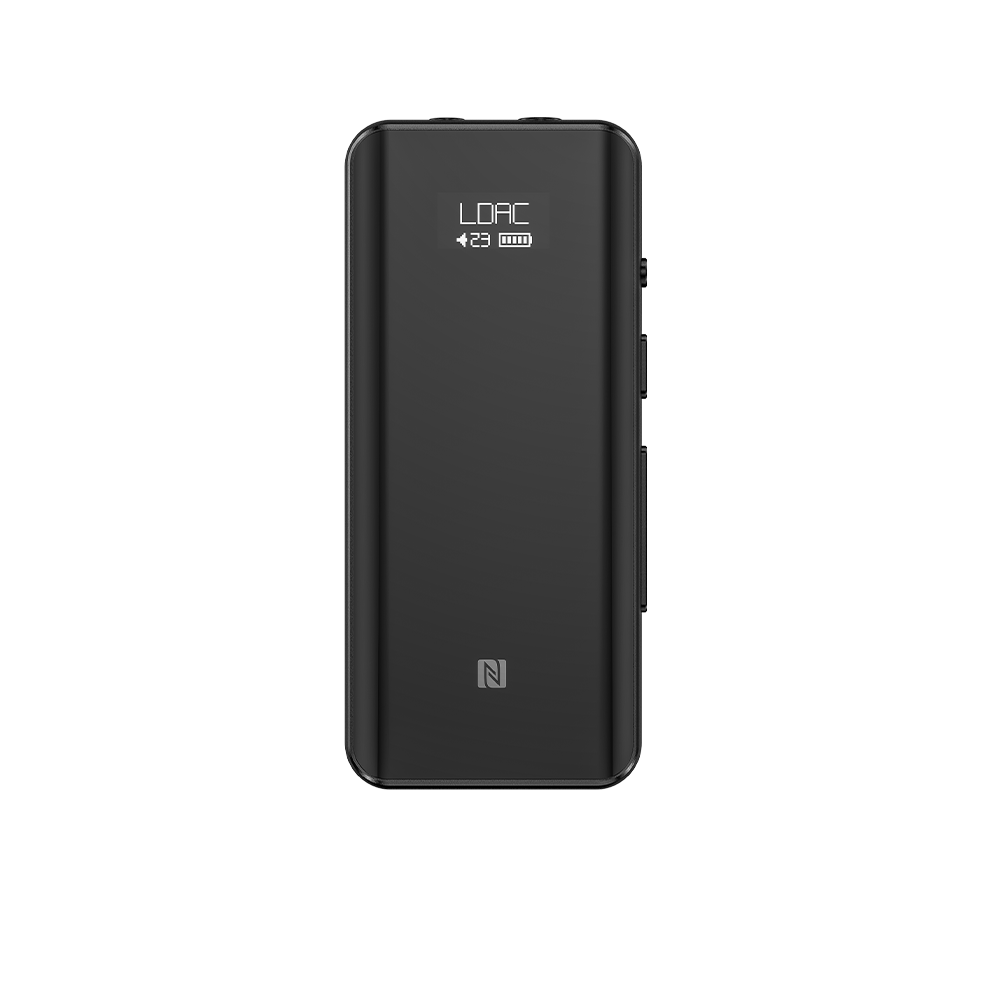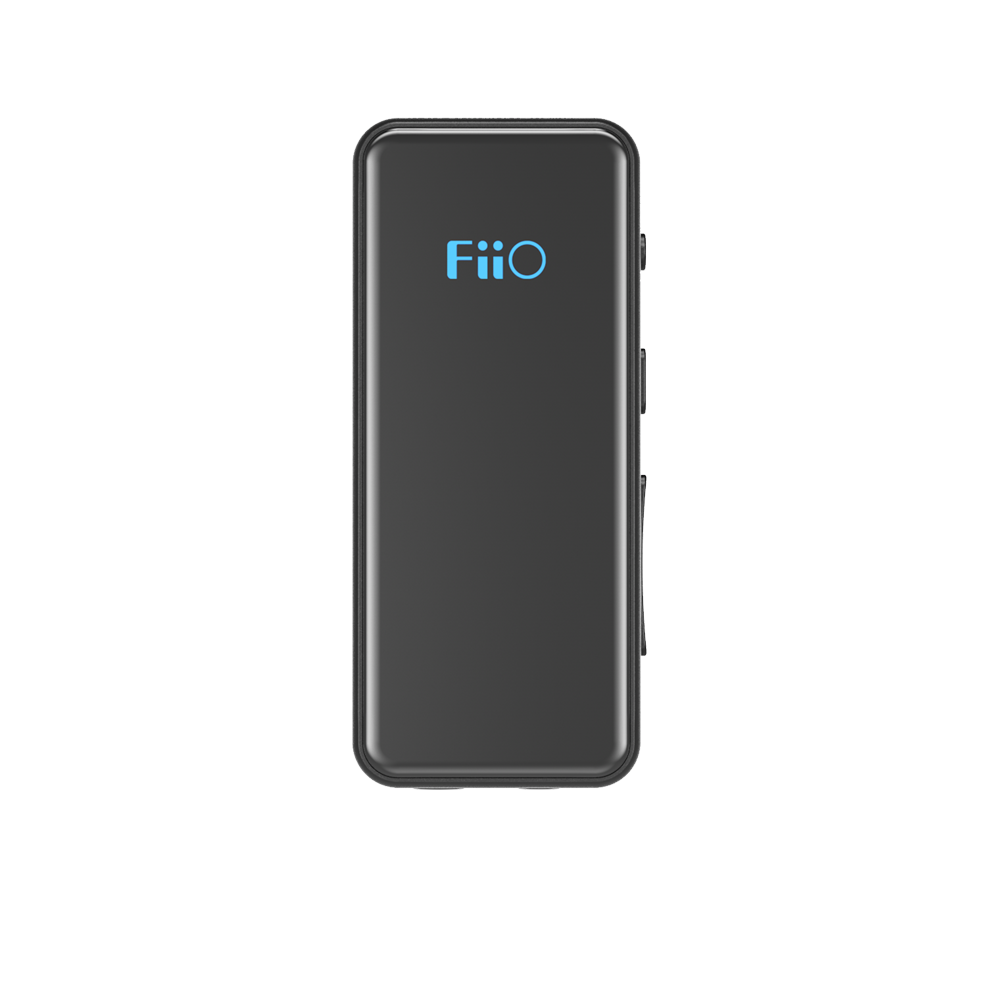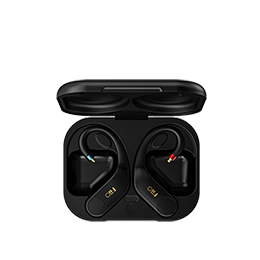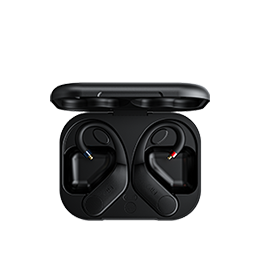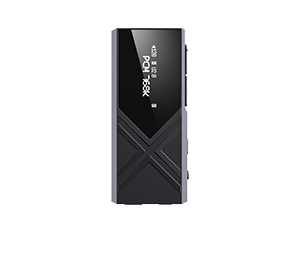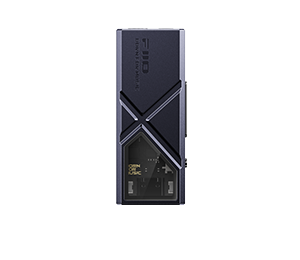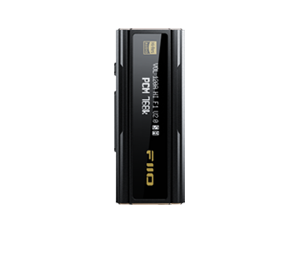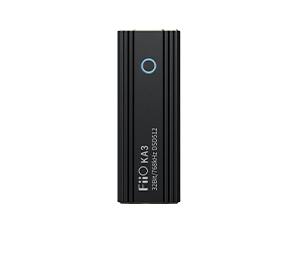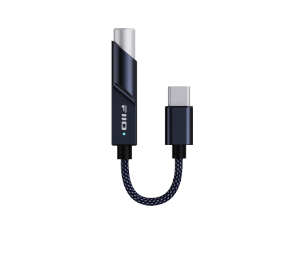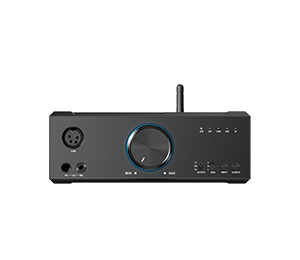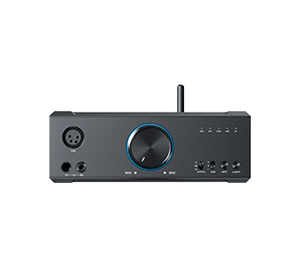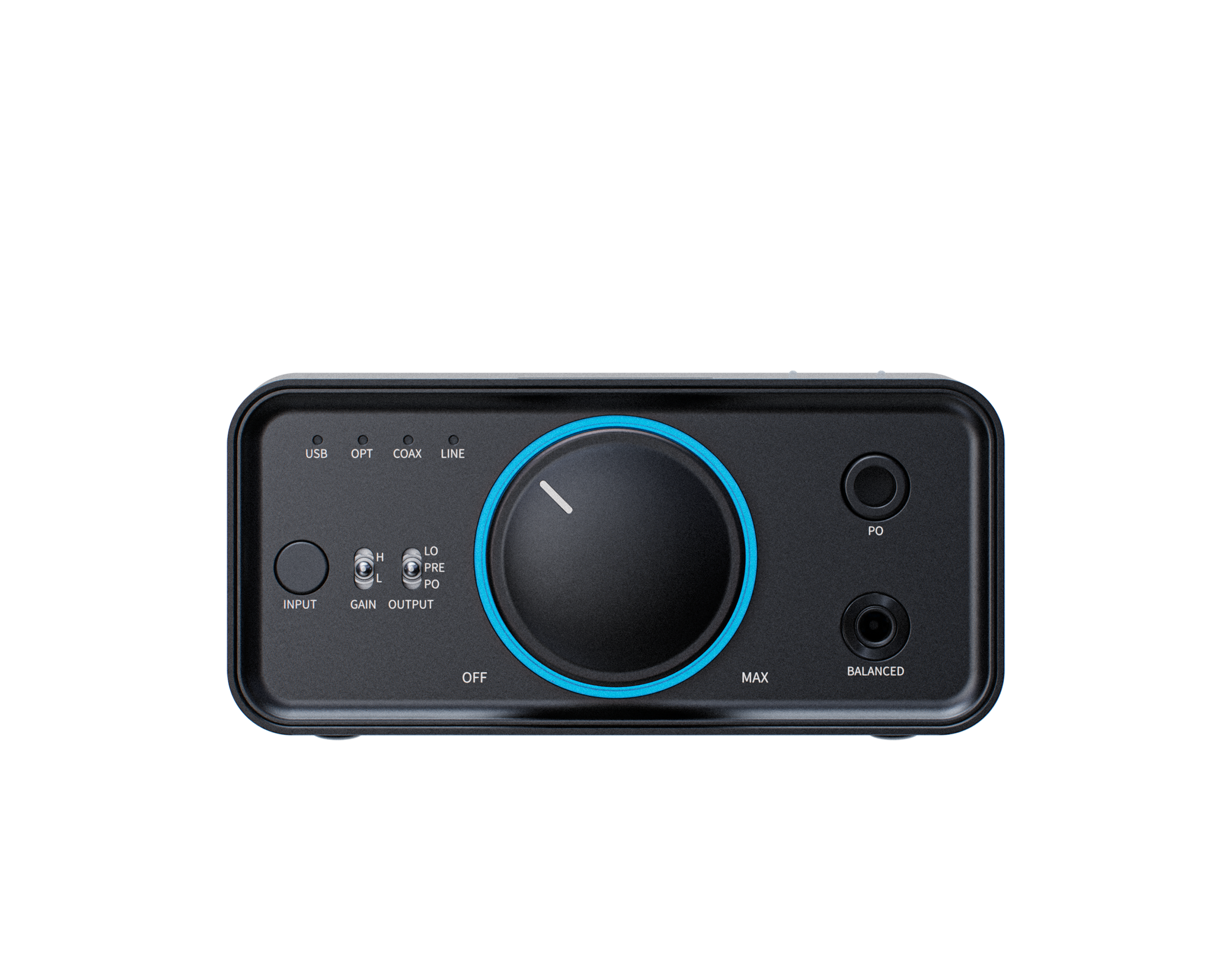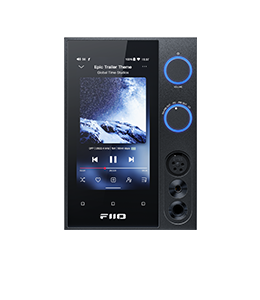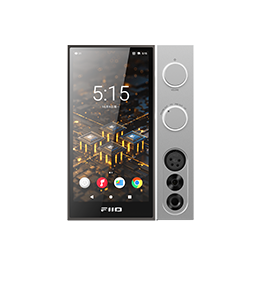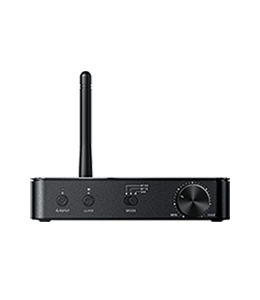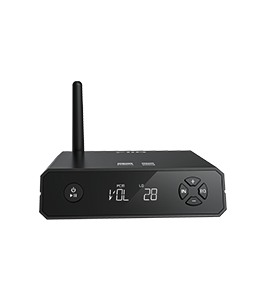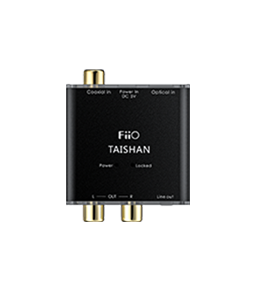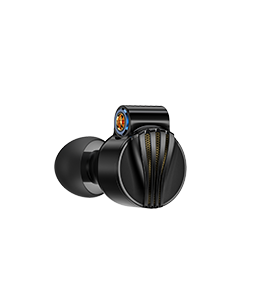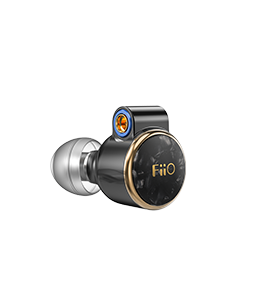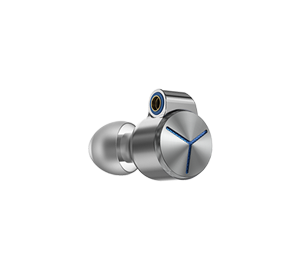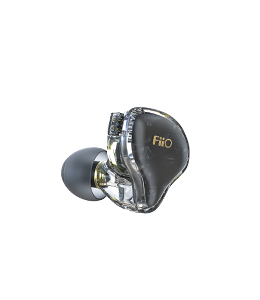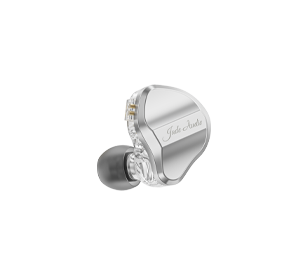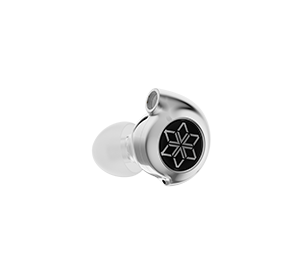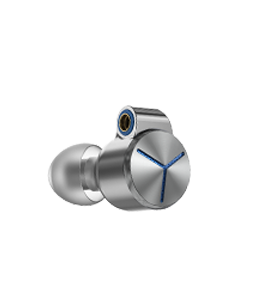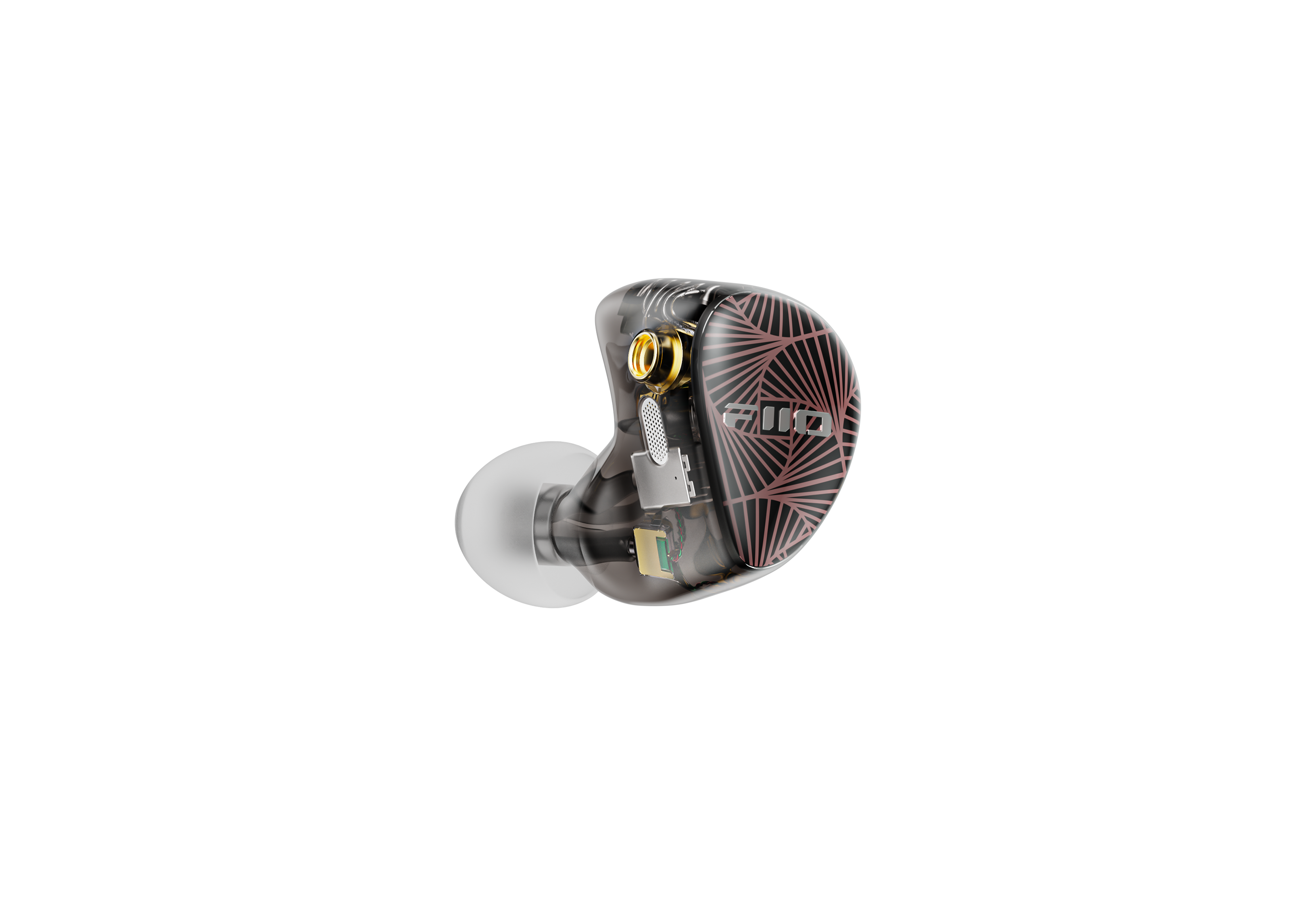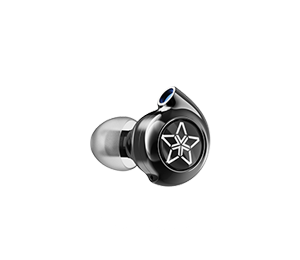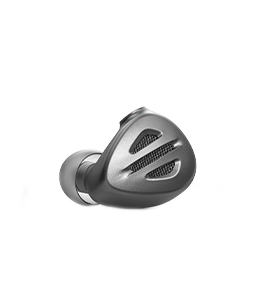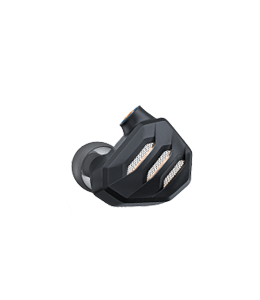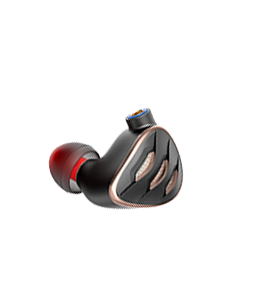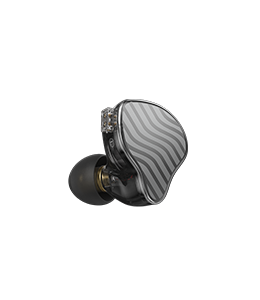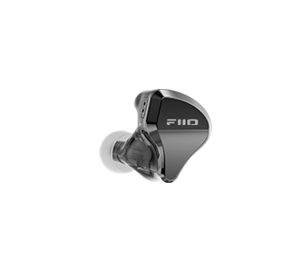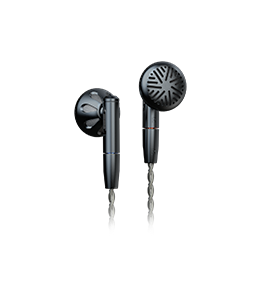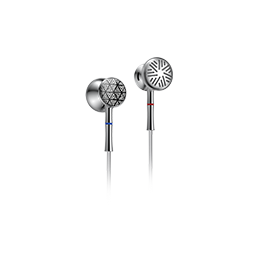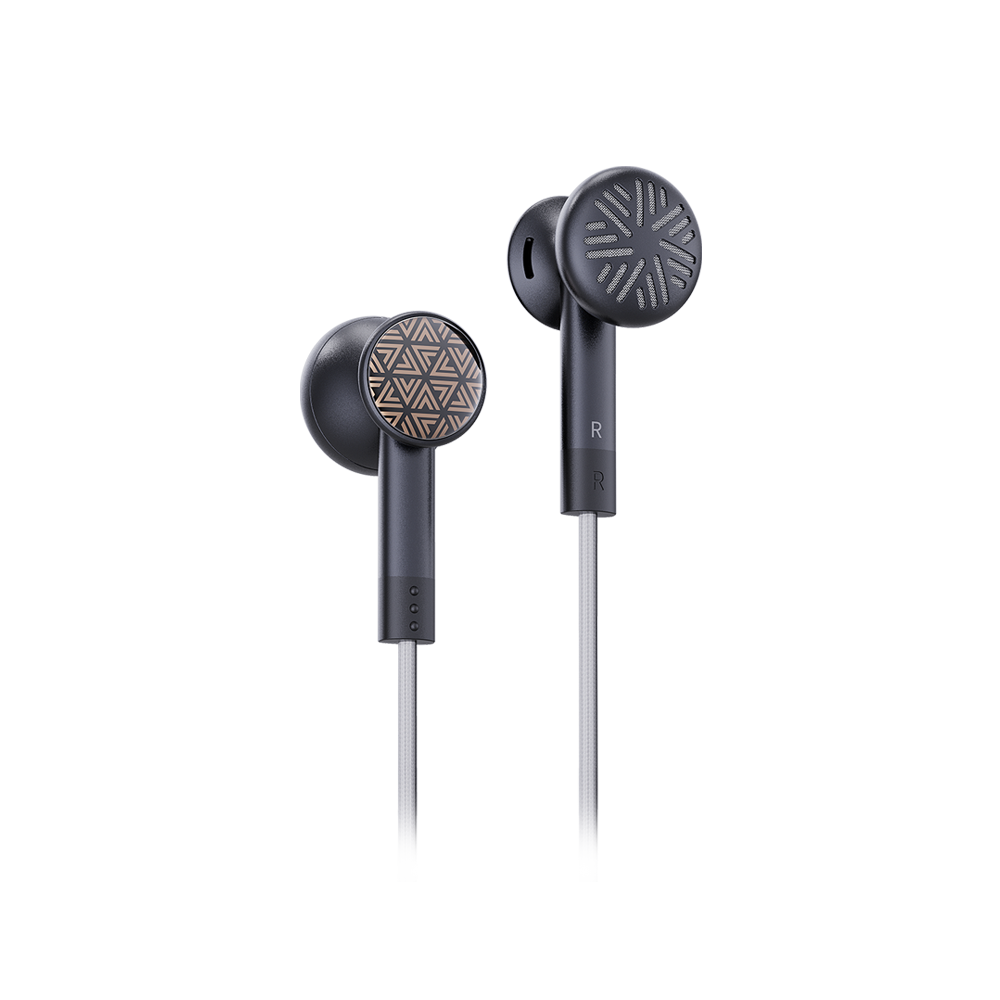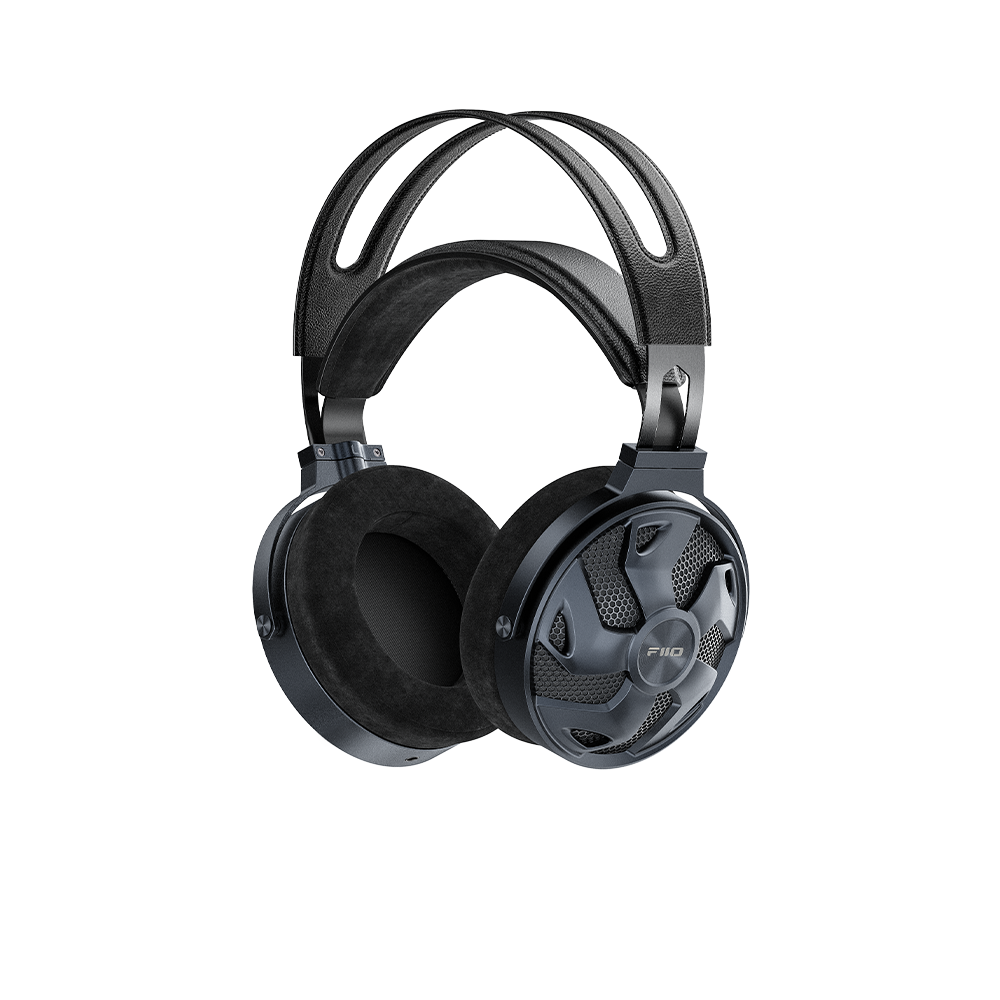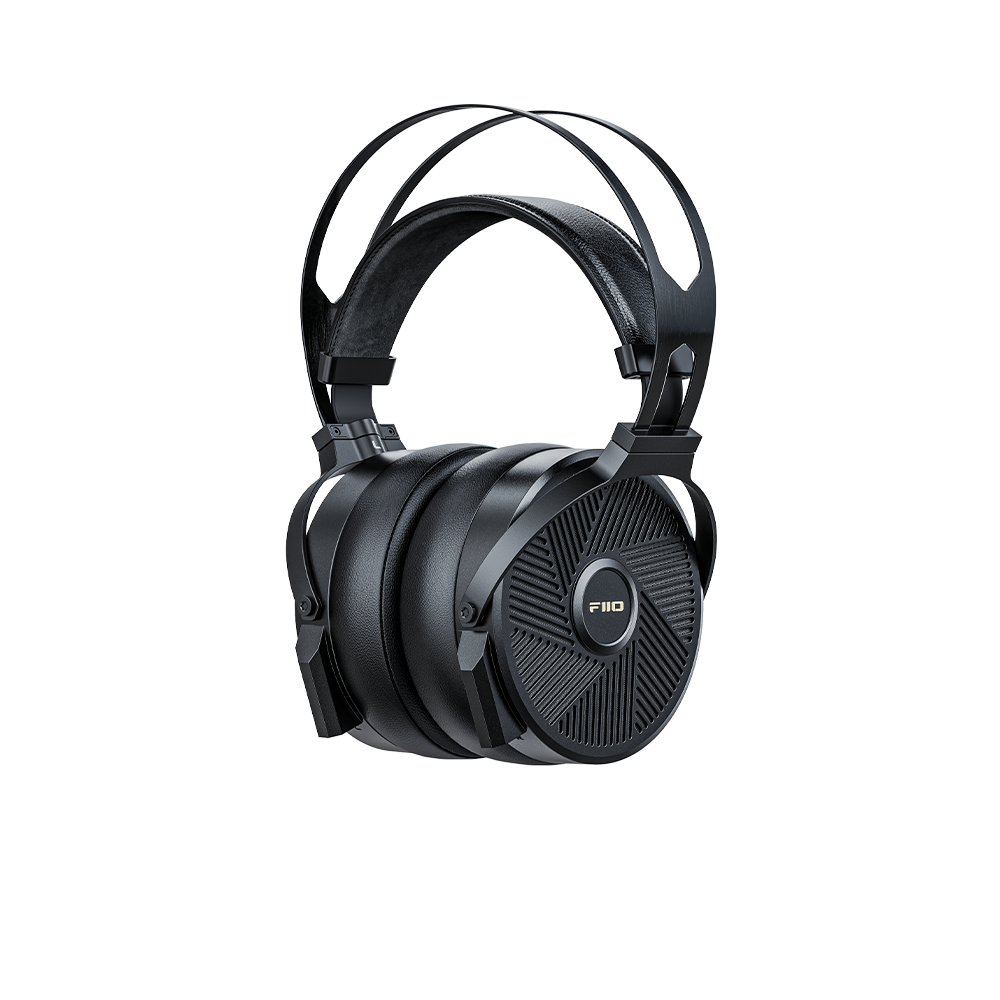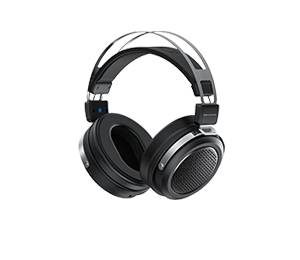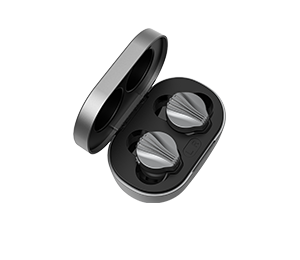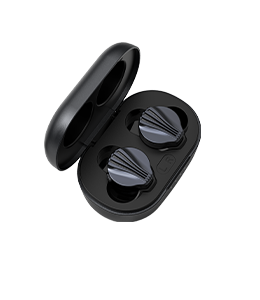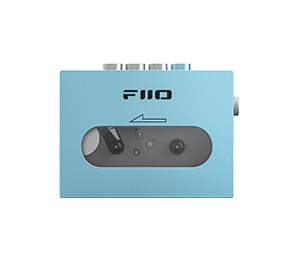Author:HiFiChris
Review from:Head-Fi
→→ Read the original article on Head-Fi:>> Click here
Pros - •value
•balanced tonality
•great technical performance for the price
•really well-done blend of dynamic bass character and control
•plenty great included accessories
•build quality, ergonomics, design
Cons - •treble somewhat on the hotter side
•a bit more treble linearity would be desirable
•mids probably a touch too much on the leaner side
Preamble:
Originally posted in English on my mixed language English and German audio review website, the "Kopfhörer-Lounge", here comes my review of the FiiO F9 Pro hybrid triple-driver.
Introduction:
FiiO have definitely come a long way since they started – and they turned into a large, influential and important audio company over the years.
I have owned (and still do) several of FiiO’s products, and was among the first who purchased the first generation of the X3 digital audio player that, while it experienced some delays until it finally hit the market, probably introduced a new era of portable audio players, bringing a solid noise performance, low output impedance and good measurements down to a reasonable price.
![[IMG]](https://1.bp.blogspot.com/-7aw9rFXw-xY/Wi_TZy6dZbI/AAAAAAAAHEk/Y1ouldZqKO4vFKkqfUJ55ZSds-DgbP9qACLcBGAs/s640/DSC04797-small.JPG)
As time went by, FiiO’s line of digital audio players evolved more and more, and they eventually also introduced various in-ears, such as the hybrid triple-driver F9 that now gets a “Pro” version which basically differs from the regular one by using two different Balanced Armature drivers from the well-known manufacturer Knowles.
How does it sound? Let’s find it out!
Full disclosure: I was provided with a sample of the FiiO F9 Pro in-ears free of charge for the purpose of an, as always, unpaid, honest and unbiased review that reflects nothing but my own impressions and wasn’t given any directions/guidelines, no matter how it would turn out.
Technical Specifications:
MSRP before Taxes: $139.99
Type: Hybrid In-Ear
Drivers per Side: 3 (1x dynamic driver, 2x Balanced Armature (Knowles TWFK-30017-000))
Frequency Response: 15 Hz – 40 kHz
Impedance: 28 Ohms
Sensitivity: 106 dB/mW
Maximum Input Power: 100 mW
About hybrid In-Ears:
As you can already see from the technical specifications and introduction, the FiiO F9 Pro is a little different from most In-Ears produced in the past decade and doesn’t only rely on dynamic or Balanced Armature transducers for sound reproduction, but combines both in one shell.
Most In-Ears use dynamic transducers for audio playback which have the advantage of covering the whole audible spectrum and achieving a strong bass emphasis without much effort. Valuable dynamic drivers are often said to have a more bodied and musical bass that has a more soft impact and decay and lacks of the analytical character that BA transducers are known for. On the downside, in contrast to headphones with other driver principles, dynamic transducers often have a lower resolution.
Higher-priced and especially professional IEMs mostly use Balanced Armature transducers, which usually have got a higher resolution than dynamic drivers, are faster, more precise and have got the better high-level stability, which is important for stage musicians that often require higher than average listening levels. On the downside, it is usually somewhat difficult (although not impossible) to cover the whole audible spectrum with just one single BA transducer, and a strongly emphasised bass is often only possible with multiple or big drivers. Some people also find In-Ears with BA transducers to sound too analytical, clinical or cold (in several active years in a German audio community where I wrote multiple reviews, gave dozens of purchase advice and help, from time to time I heard people that got into BA earphones for the first time using these attributes for describing BA earphones, especially their lower frequencies).
Hybrid IEMs unite the positive aspects of both driver principles and use one dynamic transducer for the lows reproduction and at least one BA driver for covering the midrange and highs, wherefore the often as “musical” described bass character remains and the BA transducers add resolution, speed and precision to the mids and highs (, at least in theory) – and that’s what the FiiO F9 Pro does with its technology. It is addressed to those people who perceive the clinically-fast character of BA transducers as unnatural and prefer body and weight, but want to keep the mids’ and highs’ resolution, nimbleness and precision.
Delivery Content:
One word: Plenty.
![[IMG]](https://3.bp.blogspot.com/-NEgoQkDKxFc/Wi_YfgyhYUI/AAAAAAAAHFA/4_Fm1SLlGhcHKMStLY5xBCfAtVlJYhWOACEwYBhgL/s640/DSC04799-small.JPG)
You don’t only get the in-ears, but also two pairs of cables (single-ended 3.5 mm with in-line three-button remote control and microphone, 2.5 mm TRRS), two storage cases, and last but not least four different sets of differently sized ear tips (3x silicone, 1x foam).
Looks, Feels, Build Quality:
The FiiO F9 Pro features a similar shell design as the normal F9, however its colour is different and it has got “Pro” markings on the inner half.
Build quality is good and the metal shells appear valuable and sturdy.
The two carrying cases are nice as well and have got soft padding on the inside to protect the ear pieces from scratches. The smaller of the two is, in my opinion, nice if you want to carry around some ear tips or a spare cable, and you can store the accessories in it and then put it inside the bigger hard-case together with the in-ear. Or, if you prefer to carry a smaller bag with you, the smaller of the two cases also offers already enough room for the F9 Pro.
If you are familiar with DUNU’s more recent in-ears, you will probably immediately recognise the F9 Pro’s standard remote/mic cable, as despite lacking braiding/twisting compared to the other included cable with 2.5 mm TRRS plug, it is very soft and super flexible, and therefore among the best, if not the best, non-twisted cables on the market.
Apart from directly above the y-splitter that reads “Pro”, there is good strain relief, but unfortunately no chin-slider.
The ear guides are pre-shaped, flexible silicone tubes without any memory wire. They automatically adjust to the ears’ radius.
![[IMG]](https://1.bp.blogspot.com/-S7c5qjXKL4U/Wi_YfejSOAI/AAAAAAAAHE8/BO54jZy3IZQx3xwrK1ygjEdKcJo6GT_1ACEwYBhgL/s640/DSC04800-small.JPG)
The MMCX plugs sit firmly and tight in the sockets, and what I find nice are the matching coloured side-markers on the cable and the in-ears themselves.
Oh, and before I forget to mention it: the remote control is really nice since the volume buttons are easy to distinguish and since it doesn’t require much force to push them, yet definition is good and not too soft.
Comfort, Isolation:
Thanks to the general shell design that was made popular by Shure and Westone, the F9 Pro sits ergonomically in one’s ears and most people should be able to wear it for hours without experiencing any discomfort.
Thanks to the nice cable, microphonics are close to being inexistent.
![[IMG]](https://4.bp.blogspot.com/-FmydNmMbD4I/Wi_YfTA9c5I/AAAAAAAAHE4/siV1hAxDD_wwWfkPu_4ViPWtSx_yCjS1ACEwYBhgL/s640/DSC04801-small.JPG)
Noise isolation is on the lower to average side, which was to be expected given the F9 Pro is vented.
Sound:
For listening, I mainly used the iBasso DX200 (AMP1 and AMP2 module) and Cowon Plenue 2. The FiiO was always used with the included single-ended cable during comparisons and listening.
Mainly the largest included white silicone tips were used for listening and all comparisons.
Frequency response measurements can be found here: http://frequency-response.blogspot.com
Tonality:
Quite interestingly, the included white silicone tips have got the least amount of upper treble elevation out of all included silicone tips. They also slightly lift the lower and middle treble (~ 3 to 6 kHz) though.
Covering the dynamic driver’s front cavity vent, which is true for pretty much all dynamic driver and hybrid in-ears, will increase bass quantity quite noticeably. Depending on your individual ear anatomy, this vent might be either free or fully blocked.
Interestingly enough, in my ears, this vent remains quite free, which is rather rarely the case for my ear anatomy, so all of the following impressions are written with the front cavity vent remaining free.
Depending on individual ear anatomy, bass levels can also be anywhere in-between.
Bass is on the balanced side, with a rather modest lift of ca. 5 to 6 dB compared to an in-ear that is diffuse-field flat in the lows, such as the Etymotic ER4SR. It starts rising around 800 Hz and reaches its climax around 200 Hz, and extends into the true sub-bass with almost no level drop, and certainly no roll-off. Due to the rather modest and balanced bass lift as well as its quite flat extension, don’t expect any real deep, visceral rumble though.
Yep, the F9 Pro is far from basshead levels and features a quite balanced bass presentation with the right balance between a little punch and evenness, and its lows also stay out of the midrange quite nicely.
The mids are on the brighter, somewhat leaner side with a lift from 1 towards 3 kHz, something that gives them clarity and more presence in the mix and helps vocals to retain presence instead of appearing too distant, although the presentation is not exactly “in your face” either.
Balance is good, and while there definitely is some undeniable colouration towards the brighter, leaner side, they still appear mostly well-done although not fully natural, which is in the nature of this tuning that is by the way rather popular among hybrid in-ears coming from Asian manufacturers, and helps focusing on air and clarity. Nonetheless the amount of leanness in the mids, while not as bad as the Fidue A85 (the F9 Pro still has a little bit of countervailing lower midrange body and is a little less elevated in the upper mids, and the balance between subtle warmth and clarity is overall quite well-made), might become a bit annoying over time and doesn’t always fit to the singer’s voice – I would say that it works most of the time, but sometimes the vocal timbre can already appear a bit too off.
Above that, there is a lift at 5 kHz, followed by a rather strong peak at 8 kHz and really good extension past 10 kHz.
Therefore the highs are quite undeniably on the bright side and the F9 Pro is an in-ear that was rather designed for treble lovers.
While sibilance and vocal sharpness are still nicely avoided, the 5 kHz elevation adds some metallic-ness to the presentation while the 8 kHz lift tends to a bit of sharpness at times. This is still okay and tolerable for a hybrid in-ear at this price point and nothing that cannot be fixed without some EQ tweaks, however a bit more evenness and probably a headroom-generating dip around 5 kHz would have been a bit nicer for an overall more even and realistic treble presentation. It overall just feels a little “rougher” and “edgier” than comparably bright dynamic driver in-ears, giving the F9 Pro a rather “hard” and unforgiving sound in the highs.
![[IMG]](https://2.bp.blogspot.com/-0X6SxPqofFo/Wi_YgAJyStI/AAAAAAAAHFM/3OSNf-BshyAWm_JsdKze0dRuqeIhOda0QCEwYBhgL/s640/DSC04802-small.JPG)
Resolution:
On the technical side, the F9 Pro is a quite convincing in-ear that sounds just like what you probably wish a hybrid in-ear to sound like at this price point – clean and crisp midrange and treble with good separation, together with a bass that has got somewhat more decay and less tightness compared to most Balanced Armature woofer implementations, while still sounding quite controlled, giving it a character that most people would refer to as “natural”.
Bass definition and control are good for the price and class, albeit not as fast and tight as the iBasso IT03 that is among the fastest and tightest hybrid in-ears when it comes to bass. It doesn’t sound muddy though and also doesn’t appear disconnected from the mids and highs, so coherency is quite good (while tuning coherency could be a bit higher in the highs).
With quick bass punches and attacks, lows tend to lose a little focus, which is common for implementations that are not extremely fast and tight, but always remain distinguishable.
Separation in the mids and highs is quite precise and speech intelligibility is also good.
Soundstage:
The F9 Pro neither disappoints nor really excels in this area – on the whole, its spatial presentation is rather average, with a somewhat wider than deep presentation while there is still noticeable front projection with surprisingly good layering that lets you discern far and close instruments as well as those in-between quite well.
Imaging is quite good too, and the “empty” space between instruments is pretty clean.
---------
In Comparison with other hybrid Triple-Driver In-Ears:
Fidue A73:
Bass level on both in-ears will ultimately depend on how much the inner vent is covered, but nonetheless the Fidue has got the warmer and fuller lower-end presentation with more warmth and body in the root/fundamental range and lower midrange.
The FiiO is a bit brighter, leaner sounding in the midrange, with the Fidue having a gentler clarity lift in the lower highs/upper mids.
While the Fidue is already a bright in-ear in the upper highs, the FiiO’s upper treble peak is stronger and tends to more sharpness – the Fidue just has that 5 kHz dip that is necessary to generate the headroom for the peak whereas the FiiO is a bit over-energetic here.
Bass definition on the FiiO is ultimately a little higher, with the Fidue appearing a bit more layered and textured as a result of its somewhat softer, more body-focused presentation. Control is still quite comparable though.
The FiiO has got the more revealing character since it is brighter in the highs, but I’d also generally say that the FiiO is a little ahead when it comes to separation and precision in the mids and highs. Still not a large difference, but noticeable with faster and more complex music.
The Fidue has got the somewhat more open and slightly wider soundstage while imaging is comparably precise, however the FiiO has got a bit of an advantage in the end when it comes to the cleanness when portraying “empty” space between musicians and instruments.
- - -
Subjectively, I personally prefer the Fidue’s tonal tuning that is a bit less “aggressive” in the highs despite also being on the brighter side with an upper treble peak, while the FiiO offers a bit more precision and more features as well as accessories for roughly the same price.
1More E1001:
Even with fully open vents, the E1001 is bassier than the F9 Pro.
The E1001 has also got a somewhat clarity-oriented midrange tuning, but the F9 Pro is ultimately slightly leaner overall. While the E1001 has got a dip in the middle highs around 5 kHz, the F9 Pro is a bit elevated in that area.
The E1001 peaks at a higher frequency in the upper highs, with comparable but ultimately still slightly quieter levels.
In the lows, the E1001 is (audibly) softer and looser, with inferior speed and control. Therefore it feels a bit disconnected from the rest, something I criticised quite a bit in my original review. Coherency is therefore superior on the F9 Pro that also sounds noticeably better separated and focussed with complex and fast tracks.
The 1More has got the wider soundstage that also sounds a bit more open, however separation is a bit cleaner on the FiiO that also has the more precise layering.
- - -
Overall the E1001 is the easier to listen to and more mass-friendly in-ear with its u-shaped tonality, however when it comes to technical abilities and driver coherency, it ultimately loses audibly against the FiiO.
Conclusion:
The FiiO F9 Pro offers really good value, plenty of really nice accessories, has got nice features (replaceable cables plus inline remote control) and build quality coupled with a good, quite precise technical presentation for the price and a hybrid in-ear at this price point, but ultimately lacks some realism and naturalness in the upper mids and treble that can become a bit over-energetic over time and if you don’t like a generally bright signature. Nonetheless it sounds clear, well-separated as well as detailed.
![[IMG]](https://1.bp.blogspot.com/-hk7mJ_Wiq5U/Wi_X9f3GkpI/AAAAAAAAHEw/KOaDU6PkISc0puYmVs9GdGq4uuqq_i_2QCEwYBhgL/s640/DSC04798-small.JPG)
Pros - •value
•balanced tonality
•great technical performance for the price
•really well-done blend of dynamic bass character and control
•plenty great included accessories
•build quality, ergonomics, design
Cons - •treble somewhat on the hotter side
•a bit more treble linearity would be desirable
•mids probably a touch too much on the leaner side
Preamble:
Originally posted in English on my mixed language English and German audio review website, the "Kopfhörer-Lounge", here comes my review of the FiiO F9 Pro hybrid triple-driver.
Introduction:
FiiO have definitely come a long way since they started – and they turned into a large, influential and important audio company over the years.
I have owned (and still do) several of FiiO’s products, and was among the first who purchased the first generation of the X3 digital audio player that, while it experienced some delays until it finally hit the market, probably introduced a new era of portable audio players, bringing a solid noise performance, low output impedance and good measurements down to a reasonable price.
![[IMG]](https://1.bp.blogspot.com/-7aw9rFXw-xY/Wi_TZy6dZbI/AAAAAAAAHEk/Y1ouldZqKO4vFKkqfUJ55ZSds-DgbP9qACLcBGAs/s640/DSC04797-small.JPG)
As time went by, FiiO’s line of digital audio players evolved more and more, and they eventually also introduced various in-ears, such as the hybrid triple-driver F9 that now gets a “Pro” version which basically differs from the regular one by using two different Balanced Armature drivers from the well-known manufacturer Knowles.
How does it sound? Let’s find it out!
Full disclosure: I was provided with a sample of the FiiO F9 Pro in-ears free of charge for the purpose of an, as always, unpaid, honest and unbiased review that reflects nothing but my own impressions and wasn’t given any directions/guidelines, no matter how it would turn out.
Technical Specifications:
MSRP before Taxes: $139.99
Type: Hybrid In-Ear
Drivers per Side: 3 (1x dynamic driver, 2x Balanced Armature (Knowles TWFK-30017-000))
Frequency Response: 15 Hz – 40 kHz
Impedance: 28 Ohms
Sensitivity: 106 dB/mW
Maximum Input Power: 100 mW
About hybrid In-Ears:
As you can already see from the technical specifications and introduction, the FiiO F9 Pro is a little different from most In-Ears produced in the past decade and doesn’t only rely on dynamic or Balanced Armature transducers for sound reproduction, but combines both in one shell.
Most In-Ears use dynamic transducers for audio playback which have the advantage of covering the whole audible spectrum and achieving a strong bass emphasis without much effort. Valuable dynamic drivers are often said to have a more bodied and musical bass that has a more soft impact and decay and lacks of the analytical character that BA transducers are known for. On the downside, in contrast to headphones with other driver principles, dynamic transducers often have a lower resolution.
Higher-priced and especially professional IEMs mostly use Balanced Armature transducers, which usually have got a higher resolution than dynamic drivers, are faster, more precise and have got the better high-level stability, which is important for stage musicians that often require higher than average listening levels. On the downside, it is usually somewhat difficult (although not impossible) to cover the whole audible spectrum with just one single BA transducer, and a strongly emphasised bass is often only possible with multiple or big drivers. Some people also find In-Ears with BA transducers to sound too analytical, clinical or cold (in several active years in a German audio community where I wrote multiple reviews, gave dozens of purchase advice and help, from time to time I heard people that got into BA earphones for the first time using these attributes for describing BA earphones, especially their lower frequencies).
Hybrid IEMs unite the positive aspects of both driver principles and use one dynamic transducer for the lows reproduction and at least one BA driver for covering the midrange and highs, wherefore the often as “musical” described bass character remains and the BA transducers add resolution, speed and precision to the mids and highs (, at least in theory) – and that’s what the FiiO F9 Pro does with its technology. It is addressed to those people who perceive the clinically-fast character of BA transducers as unnatural and prefer body and weight, but want to keep the mids’ and highs’ resolution, nimbleness and precision.
Delivery Content:
One word: Plenty.
![[IMG]](https://3.bp.blogspot.com/-NEgoQkDKxFc/Wi_YfgyhYUI/AAAAAAAAHFA/4_Fm1SLlGhcHKMStLY5xBCfAtVlJYhWOACEwYBhgL/s640/DSC04799-small.JPG)
You don’t only get the in-ears, but also two pairs of cables (single-ended 3.5 mm with in-line three-button remote control and microphone, 2.5 mm TRRS), two storage cases, and last but not least four different sets of differently sized ear tips (3x silicone, 1x foam).
Looks, Feels, Build Quality:
The FiiO F9 Pro features a similar shell design as the normal F9, however its colour is different and it has got “Pro” markings on the inner half.
Build quality is good and the metal shells appear valuable and sturdy.
The two carrying cases are nice as well and have got soft padding on the inside to protect the ear pieces from scratches. The smaller of the two is, in my opinion, nice if you want to carry around some ear tips or a spare cable, and you can store the accessories in it and then put it inside the bigger hard-case together with the in-ear. Or, if you prefer to carry a smaller bag with you, the smaller of the two cases also offers already enough room for the F9 Pro.
If you are familiar with DUNU’s more recent in-ears, you will probably immediately recognise the F9 Pro’s standard remote/mic cable, as despite lacking braiding/twisting compared to the other included cable with 2.5 mm TRRS plug, it is very soft and super flexible, and therefore among the best, if not the best, non-twisted cables on the market.
Apart from directly above the y-splitter that reads “Pro”, there is good strain relief, but unfortunately no chin-slider.
The ear guides are pre-shaped, flexible silicone tubes without any memory wire. They automatically adjust to the ears’ radius.
![[IMG]](https://1.bp.blogspot.com/-S7c5qjXKL4U/Wi_YfejSOAI/AAAAAAAAHE8/BO54jZy3IZQx3xwrK1ygjEdKcJo6GT_1ACEwYBhgL/s640/DSC04800-small.JPG)
The MMCX plugs sit firmly and tight in the sockets, and what I find nice are the matching coloured side-markers on the cable and the in-ears themselves.
Oh, and before I forget to mention it: the remote control is really nice since the volume buttons are easy to distinguish and since it doesn’t require much force to push them, yet definition is good and not too soft.
Comfort, Isolation:
Thanks to the general shell design that was made popular by Shure and Westone, the F9 Pro sits ergonomically in one’s ears and most people should be able to wear it for hours without experiencing any discomfort.
Thanks to the nice cable, microphonics are close to being inexistent.
![[IMG]](https://4.bp.blogspot.com/-FmydNmMbD4I/Wi_YfTA9c5I/AAAAAAAAHE4/siV1hAxDD_wwWfkPu_4ViPWtSx_yCjS1ACEwYBhgL/s640/DSC04801-small.JPG)
Noise isolation is on the lower to average side, which was to be expected given the F9 Pro is vented.
Sound:
For listening, I mainly used the iBasso DX200 (AMP1 and AMP2 module) and Cowon Plenue 2. The FiiO was always used with the included single-ended cable during comparisons and listening.
Mainly the largest included white silicone tips were used for listening and all comparisons.
Frequency response measurements can be found here: http://frequency-response.blogspot.com
Tonality:
Quite interestingly, the included white silicone tips have got the least amount of upper treble elevation out of all included silicone tips. They also slightly lift the lower and middle treble (~ 3 to 6 kHz) though.
Covering the dynamic driver’s front cavity vent, which is true for pretty much all dynamic driver and hybrid in-ears, will increase bass quantity quite noticeably. Depending on your individual ear anatomy, this vent might be either free or fully blocked.
Interestingly enough, in my ears, this vent remains quite free, which is rather rarely the case for my ear anatomy, so all of the following impressions are written with the front cavity vent remaining free.
Depending on individual ear anatomy, bass levels can also be anywhere in-between.
Bass is on the balanced side, with a rather modest lift of ca. 5 to 6 dB compared to an in-ear that is diffuse-field flat in the lows, such as the Etymotic ER4SR. It starts rising around 800 Hz and reaches its climax around 200 Hz, and extends into the true sub-bass with almost no level drop, and certainly no roll-off. Due to the rather modest and balanced bass lift as well as its quite flat extension, don’t expect any real deep, visceral rumble though.
Yep, the F9 Pro is far from basshead levels and features a quite balanced bass presentation with the right balance between a little punch and evenness, and its lows also stay out of the midrange quite nicely.
The mids are on the brighter, somewhat leaner side with a lift from 1 towards 3 kHz, something that gives them clarity and more presence in the mix and helps vocals to retain presence instead of appearing too distant, although the presentation is not exactly “in your face” either.
Balance is good, and while there definitely is some undeniable colouration towards the brighter, leaner side, they still appear mostly well-done although not fully natural, which is in the nature of this tuning that is by the way rather popular among hybrid in-ears coming from Asian manufacturers, and helps focusing on air and clarity. Nonetheless the amount of leanness in the mids, while not as bad as the Fidue A85 (the F9 Pro still has a little bit of countervailing lower midrange body and is a little less elevated in the upper mids, and the balance between subtle warmth and clarity is overall quite well-made), might become a bit annoying over time and doesn’t always fit to the singer’s voice – I would say that it works most of the time, but sometimes the vocal timbre can already appear a bit too off.
Above that, there is a lift at 5 kHz, followed by a rather strong peak at 8 kHz and really good extension past 10 kHz.
Therefore the highs are quite undeniably on the bright side and the F9 Pro is an in-ear that was rather designed for treble lovers.
While sibilance and vocal sharpness are still nicely avoided, the 5 kHz elevation adds some metallic-ness to the presentation while the 8 kHz lift tends to a bit of sharpness at times. This is still okay and tolerable for a hybrid in-ear at this price point and nothing that cannot be fixed without some EQ tweaks, however a bit more evenness and probably a headroom-generating dip around 5 kHz would have been a bit nicer for an overall more even and realistic treble presentation. It overall just feels a little “rougher” and “edgier” than comparably bright dynamic driver in-ears, giving the F9 Pro a rather “hard” and unforgiving sound in the highs.
![[IMG]](https://2.bp.blogspot.com/-0X6SxPqofFo/Wi_YgAJyStI/AAAAAAAAHFM/3OSNf-BshyAWm_JsdKze0dRuqeIhOda0QCEwYBhgL/s640/DSC04802-small.JPG)
Resolution:
On the technical side, the F9 Pro is a quite convincing in-ear that sounds just like what you probably wish a hybrid in-ear to sound like at this price point – clean and crisp midrange and treble with good separation, together with a bass that has got somewhat more decay and less tightness compared to most Balanced Armature woofer implementations, while still sounding quite controlled, giving it a character that most people would refer to as “natural”.
Bass definition and control are good for the price and class, albeit not as fast and tight as the iBasso IT03 that is among the fastest and tightest hybrid in-ears when it comes to bass. It doesn’t sound muddy though and also doesn’t appear disconnected from the mids and highs, so coherency is quite good (while tuning coherency could be a bit higher in the highs).
With quick bass punches and attacks, lows tend to lose a little focus, which is common for implementations that are not extremely fast and tight, but always remain distinguishable.
Separation in the mids and highs is quite precise and speech intelligibility is also good.
Soundstage:
The F9 Pro neither disappoints nor really excels in this area – on the whole, its spatial presentation is rather average, with a somewhat wider than deep presentation while there is still noticeable front projection with surprisingly good layering that lets you discern far and close instruments as well as those in-between quite well.
Imaging is quite good too, and the “empty” space between instruments is pretty clean.
---------
In Comparison with other hybrid Triple-Driver In-Ears:
Fidue A73:
Bass level on both in-ears will ultimately depend on how much the inner vent is covered, but nonetheless the Fidue has got the warmer and fuller lower-end presentation with more warmth and body in the root/fundamental range and lower midrange.
The FiiO is a bit brighter, leaner sounding in the midrange, with the Fidue having a gentler clarity lift in the lower highs/upper mids.
While the Fidue is already a bright in-ear in the upper highs, the FiiO’s upper treble peak is stronger and tends to more sharpness – the Fidue just has that 5 kHz dip that is necessary to generate the headroom for the peak whereas the FiiO is a bit over-energetic here.
Bass definition on the FiiO is ultimately a little higher, with the Fidue appearing a bit more layered and textured as a result of its somewhat softer, more body-focused presentation. Control is still quite comparable though.
The FiiO has got the more revealing character since it is brighter in the highs, but I’d also generally say that the FiiO is a little ahead when it comes to separation and precision in the mids and highs. Still not a large difference, but noticeable with faster and more complex music.
The Fidue has got the somewhat more open and slightly wider soundstage while imaging is comparably precise, however the FiiO has got a bit of an advantage in the end when it comes to the cleanness when portraying “empty” space between musicians and instruments.
- - -
Subjectively, I personally prefer the Fidue’s tonal tuning that is a bit less “aggressive” in the highs despite also being on the brighter side with an upper treble peak, while the FiiO offers a bit more precision and more features as well as accessories for roughly the same price.
1More E1001:
Even with fully open vents, the E1001 is bassier than the F9 Pro.
The E1001 has also got a somewhat clarity-oriented midrange tuning, but the F9 Pro is ultimately slightly leaner overall. While the E1001 has got a dip in the middle highs around 5 kHz, the F9 Pro is a bit elevated in that area.
The E1001 peaks at a higher frequency in the upper highs, with comparable but ultimately still slightly quieter levels.
In the lows, the E1001 is (audibly) softer and looser, with inferior speed and control. Therefore it feels a bit disconnected from the rest, something I criticised quite a bit in my original review. Coherency is therefore superior on the F9 Pro that also sounds noticeably better separated and focussed with complex and fast tracks.
The 1More has got the wider soundstage that also sounds a bit more open, however separation is a bit cleaner on the FiiO that also has the more precise layering.
- - -
Overall the E1001 is the easier to listen to and more mass-friendly in-ear with its u-shaped tonality, however when it comes to technical abilities and driver coherency, it ultimately loses audibly against the FiiO.
Conclusion:
The FiiO F9 Pro offers really good value, plenty of really nice accessories, has got nice features (replaceable cables plus inline remote control) and build quality coupled with a good, quite precise technical presentation for the price and a hybrid in-ear at this price point, but ultimately lacks some realism and naturalness in the upper mids and treble that can become a bit over-energetic over time and if you don’t like a generally bright signature. Nonetheless it sounds clear, well-separated as well as detailed.
![[IMG]](https://1.bp.blogspot.com/-hk7mJ_Wiq5U/Wi_X9f3GkpI/AAAAAAAAHEw/KOaDU6PkISc0puYmVs9GdGq4uuqq_i_2QCEwYBhgL/s640/DSC04798-small.JPG)



